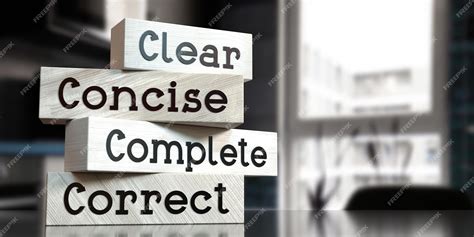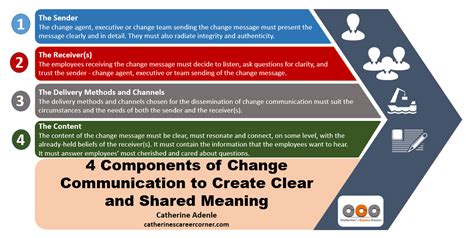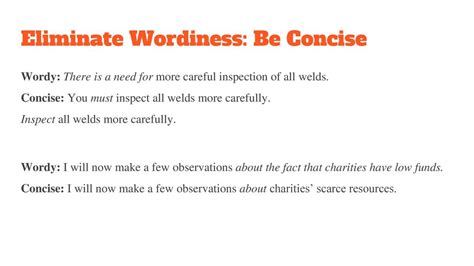In an age saturated with information, clarity and conciseness in writing are not just good practices—they are necessities. Whether you’re crafting an email, a report, or a marketing copy, the ability to convey your message efficiently determines its impact and reception. Wordiness obscures meaning, while jargon alienates your audience. This guide will help you strip away the superfluous and communicate with precision and power.
Understanding Wordiness: The Enemy of Clarity
Wordiness refers to using more words than necessary to express an idea. It bloats sentences, making them harder to read and comprehend. Often, writers fall into wordiness through habit, a desire to sound more formal, or simply not taking the time to edit rigorously.
Common Pitfalls of Wordiness:
- Redundant Phrases: Using two or more words that mean the same thing (e.g., “basic fundamentals,” “past history”).
- Empty Words & Phrases: Expressions that add little to no meaning (e.g., “due to the fact that,” “it is important to note that”).
- Passive Voice: While sometimes necessary, overuse of the passive voice can add extra words and reduce directness.
- Nominalizations: Turning verbs into nouns (e.g., “make a decision” instead of “decide,” “give a presentation” instead of “present”).
- Overuse of Adjectives & Adverbs: Sometimes one strong verb or noun can replace several modifiers.

Strategies to Combat Wordiness
Eliminating wordiness is an editing skill that improves with practice. Here are actionable strategies:
1. Cut Redundant Phrases
Review your writing for phrases where one word suffices. For example, change “at this point in time” to “now,” “in order to” to “to,” and “completely unique” to “unique.”
2. Use Strong, Direct Verbs
Active verbs invigorate sentences and often reduce word count. Replace weak verb-noun combinations with their stronger verb counterparts. Instead of “conduct an investigation,” write “investigate.” Instead of “is indicative of,” write “indicates.”
3. Prefer Active Voice
Whenever possible, use the active voice. It’s more direct and uses fewer words. “The team completed the project” is more concise and impactful than “The project was completed by the team.”
4. Eliminate Unnecessary Modifiers
Challenge every adjective and adverb. Do they truly add essential meaning, or can a stronger noun or verb convey the same idea? For instance, “walked very slowly” can often become “sauntered” or “strolled.”
5. Simplify Sentence Structure
Break down long, complex sentences into shorter, more manageable ones. Look for opportunities to combine ideas efficiently or prune clauses that don’t contribute significantly.

Tackling Jargon: Speak to Your Audience
Jargon refers to specialized words or expressions used by a particular profession or group, making it difficult for outsiders to understand. While it can be a shorthand within a specific community, its indiscriminate use alienates and confuses a broader audience.
Identifying and Replacing Jargon:
- Know Your Audience: Before you write, consider who will read your text. Are they experts in your field, or a general audience?
- Define Technical Terms: If you must use a technical term, define it clearly on its first appearance, or provide a simpler synonym.
- Use Plain Language Equivalents: Many jargon terms have simpler, everyday alternatives. Instead of “synergistic optimization,” consider “working better together.” Replace “leverage” with “use.”
- Read Aloud: Reading your text aloud can help you identify convoluted phrases and jargon that might sound natural in your head but are confusing to a listener.

The Power of Revision and Self-Editing
Conciseness is rarely achieved in the first draft. It’s a product of careful revision. Set aside your writing for a while and then return to it with fresh eyes. Pretend you are an unfamiliar reader or even better, ask someone else to read it. Highlight every phrase or sentence that seems overly long or unclear.
Tips for Effective Revision:
- Search and Replace: Use your word processor’s search function to find common wordy phrases (e.g., “the fact that,” “it is advised that”).
- Sentence by Sentence: Go through each sentence and ask, “Can I say this more simply?”
- Paragraph by Paragraph: Does each paragraph have a clear main idea? Are there any sentences that don’t support it?

Benefits of a Concise Style
Adopting a concise style offers numerous advantages:
- Increased Clarity: Your message becomes easier to understand, reducing misinterpretation.
- Enhanced Readability: Readers are more likely to engage with and finish your content.
- Greater Impact: Direct language is often more persuasive and memorable.
- Improved Credibility: Clear, precise writing demonstrates professionalism and expertise.
- Time-Saving: For both the writer (in editing focus) and the reader (in comprehension).

Conclusion
Eliminating wordiness and jargon is fundamental to effective communication. It’s an ongoing process of refining your writing, focusing on economy of words, and always keeping your audience in mind. By embracing conciseness, you not only make your writing more accessible but also more powerful, ensuring your message resonates clearly and purposefully with everyone who reads it.




